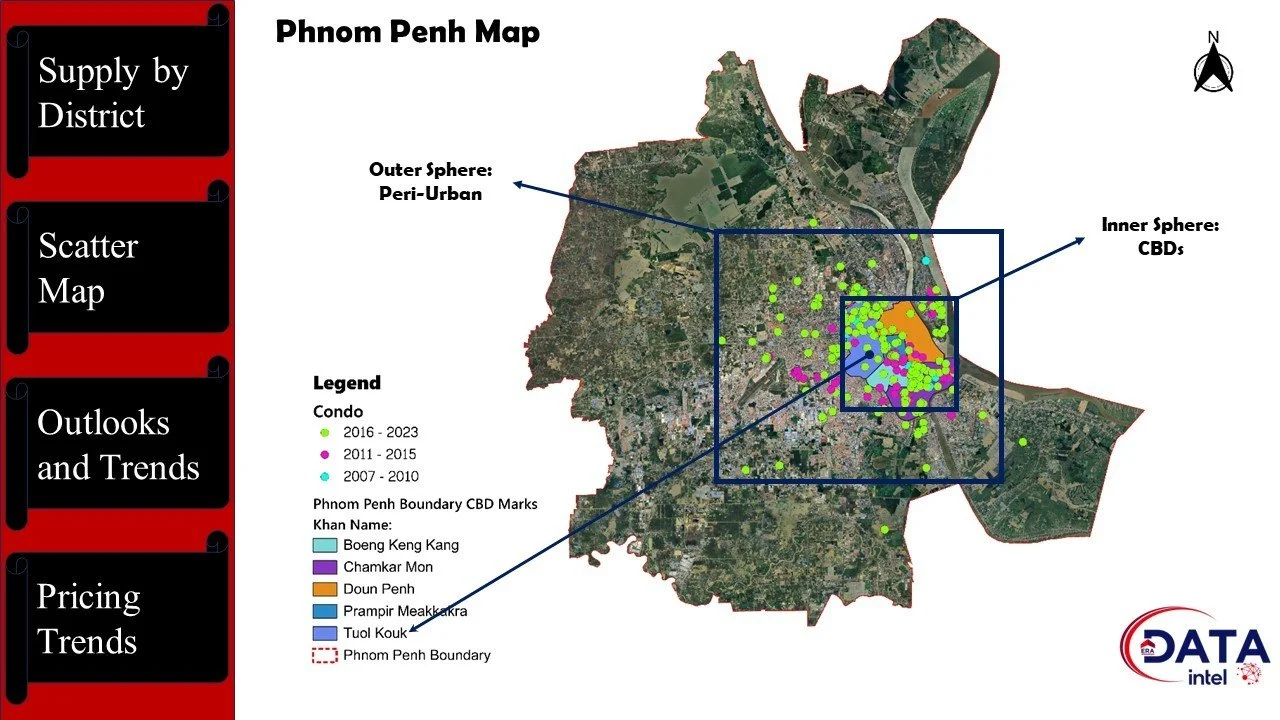Techo International Airport is set to spark a major increase in Cambodia's tourism and real estate sectors
Imagine stepping off a state-of-the-art A380, instantly greeted by sunlit, open-air terminals and a seamless arrival process—and you’ve just landed at Cambodia’s brand-new Techo International Airport. Opening on 9 September 2025, this Class-4F marvel will transform Phnom Penh into a premier global hub, turbocharging visitor numbers, supercharging our economy, and setting the stage for explosive growth in hotels, resorts, and condominiums from the riverside to the islands. Here’s why every investor, developer, and hospitality professional should be watching Cambodia’s next giant leap.
Unleashing Unprecedented Tourism Capacity
For years, Cambodia’s rapid rise in popularity—growing from 2.5 million visitors in 2010 to 6.7 million in 2024—has strained our existing airports. Techo International shatters these limits, handling 13 million passengers in its first phase and scaling to 30 million by 2030. With runways built for the largest wide-body jets, travellers from London, Dubai, and Los Angeles will enjoy direct flights for the first time. This dramatic expansion not only diversifies source markets but also slashes layover times, making Cambodia a more convenient—and compelling—destination than ever before.
Capacity Explosion: Phase 1 handles 13 million passengers annually—doubling Phnom Penh’s capacity—scaling to 30 million by 2030.
Global Reach: Bigger runways (4F-class) welcome A380s, B787s, opening direct routes from Europe, North America, and the Middle East.
Crafting Cambodia as a Multi-Destination Wonder
Pairing Techo International with Siem Reap–Angkor Airport creates a seamless two-city experience: ancient temples at dawn, vibrant city life by dusk. This dual-hub model elevates Cambodia from a one-stop wonder to a comprehensive circuit, encouraging longer stays and more sophisticated itineraries. Joint marketing campaigns will spotlight hidden gems—from Kampot’s pepper farms to Koh Rong’s pristine beaches—spreading tourism dollars more equitably across provinces.
Seamless Travel: World-class terminals and streamlined customs will enhance the visitor experience, boosting repeat and long-stay segments.
Dual-Hub Advantage: Pairing with Siem Reap–Angkor Airport turns Cambodia into a multi-destination circuit—imagine Angkor Wat to Phnom Penh in one seamless trip!
Economic Ripples: Jobs, Trade, and Investment
Tourism today accounts for roughly 12% of GDP and supports over half a million jobs. By unlocking airport capacity, we’re poised to add 50,000–70,000 new roles in hospitality, retail, transport, and logistics by 2030. The airport’s 175,000-tonne cargo terminal will streamline exports of rice, seafood, and garments, further weaving Cambodia into global supply chains. Enhanced connectivity also signals confidence to foreign investors, catalyzing new FDI in resorts, theme parks, and convention centers.
GDP Uplift: Tourism already contributes ~12% of GDP; post-airport growth could add 50K–70K jobs in hospitality, transport, and retail.
Cargo Power: 175K tonnes of annual cargo capacity will expedite rice, seafood, garment exports—further diversifying our economy.
Real Estate Renaissance: Hotels & Condos on the Rise
Higher visitor influx will push national occupancy from 65% today toward 75% by 2027, while average daily rates climb 8–10%. International hotel chains are already locking in prime riverfront and central districts for flagship properties. In tandem, the serviced-apartment condominium segment will flourish, catering to long-stay leisure travellers and digital nomads. Coastal developments in Sihanoukville and burgeoning islands like Koh Rong are set to command premium prices. Historical patterns show Phnom Penh condo values surged ~15% annually during previous booms—this time, a 20–25% uplift by 2030 is within grasp.
Occupancy & Rates: We project national occupancy to rise from ~65% (2024) to 75% by 2027, driving ADR up 8–10%.
Development Surge: International hotel brands and serviced-apartment condos will flock to Phnom Penh’s riverfront, BKK1, and coastal gateways like Sihanoukville and Koh Rong.
Asset Appreciation: Past tourism upswings saw Phnom Penh condo prices rise ~15% annually. With Techo Airport, a 20–25% total lift in values by 2030 is well within reach.
Charting the Journey: Past, Present & Future
Our tourism trajectory tells the story: pre-pandemic growth, a sharp pandemic dip, and a powerful rebound to 6.7 million arrivals in 2024. With Techo International coming online, we forecast arrivals hitting 7.2 million in 2025 and rising by roughly 8% annually to reach around 10.6 million by 2030—a testament to the airport’s catalytic power.
Techo International Airport is not merely infrastructure; it’s the ignition key for Cambodia’s next chapter of prosperity. By sweeping away capacity limits, enhancing visitor experiences, and igniting new investment flows, it lays a golden runway for tourism expansion and a real estate renaissance. For visionaries in hospitality, development, and investment, the countdown has begun. Cambodia’s skyline—and shoreline—is about to be reborn.
Contact Advisor
WhatsApp/Telegram: +855-12-699-553 / +855-10-699-553 | Telegram: t.me/Hoemseiha | E: hoem.seiha@eracambodia.com
Condo listings on Telegram channel: https://t.me/seiha_era_condo_listing



